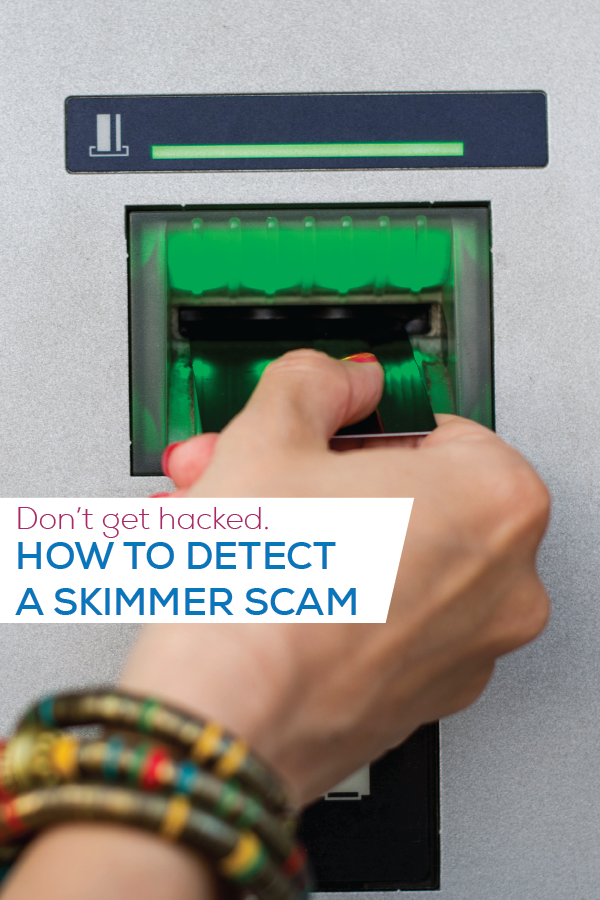Money Smarts Blog
How to detect a skimmer scam
May 1, 2017 || Amanda Spurgeon

Probably one of the most frightening things to think about is the possibility of someone stealing your private information—whether it’s through a major international data breach or a totally avoidable mistake like losing your debit card.
One of the easiest ways for thieves to steal your financial information is through devices known as skimmers attached to ATMs or credit card terminals. The good news is when it comes to protecting your information, knowledge is the best weapon.
What is a skimmer?
A skimmer is a malicious card reader that grabs your data off the card’s magnetic strip. They’re usually a piece of plastic that fits over the top of a real card reader, like those at ATMs and pay-at-the-pump gas terminals, so they can harvest data undetected every time a card is swiped.
The device itself is usually no larger than a deck of cards, and is often disguised to look like part of the ATM or terminal. Thieves will also install a hidden camera that records PINs as they’re entered or a false keypad that sits directly on top of the real pad. In order for this scam to work, the thieves must come back and retrieve the skimmer to extract the data.
Though chip cards will protect a user in many situations, classic skimmer scams are not one of them. In order to remain backwards compatible with terminals that haven’t been upgraded, chip cards still house sensitive data in the magnetic strip.
What to look for:
- Check for any signs of tampering—damaged or wiggly parts, or parts that look out of place. Wiggly parts, especially around the card reader, are generally a really good sign of tampering.
- If there are other ATMs next to the one you’re using, make sure they look alike. If there are obvious differences, don’t use either. For example, one might have light-up arrows showing which direction to insert your card while the other has only a solid plastic card slot.
- Check the top, sides of the screen, card reader and keypad. If any part of it looks out of place, like an area with different coloring or an abnormally thick keypad, don’t use it.
You should also always consider the location of an ATM or card terminal before you use it. An ATM inside of a financial institution, for example, would be less likely to have a skimmer attached because of all the cameras, but one on a low traffic street corner might be more suspicious.
The best rule of thumb is to be cautious—cover your hand when you enter your PIN and don’t use your card somewhere that seems suspicious or makes you uncomfortable. While it might be less convenient to travel elsewhere in those situations, you’re better safe than sorry.
